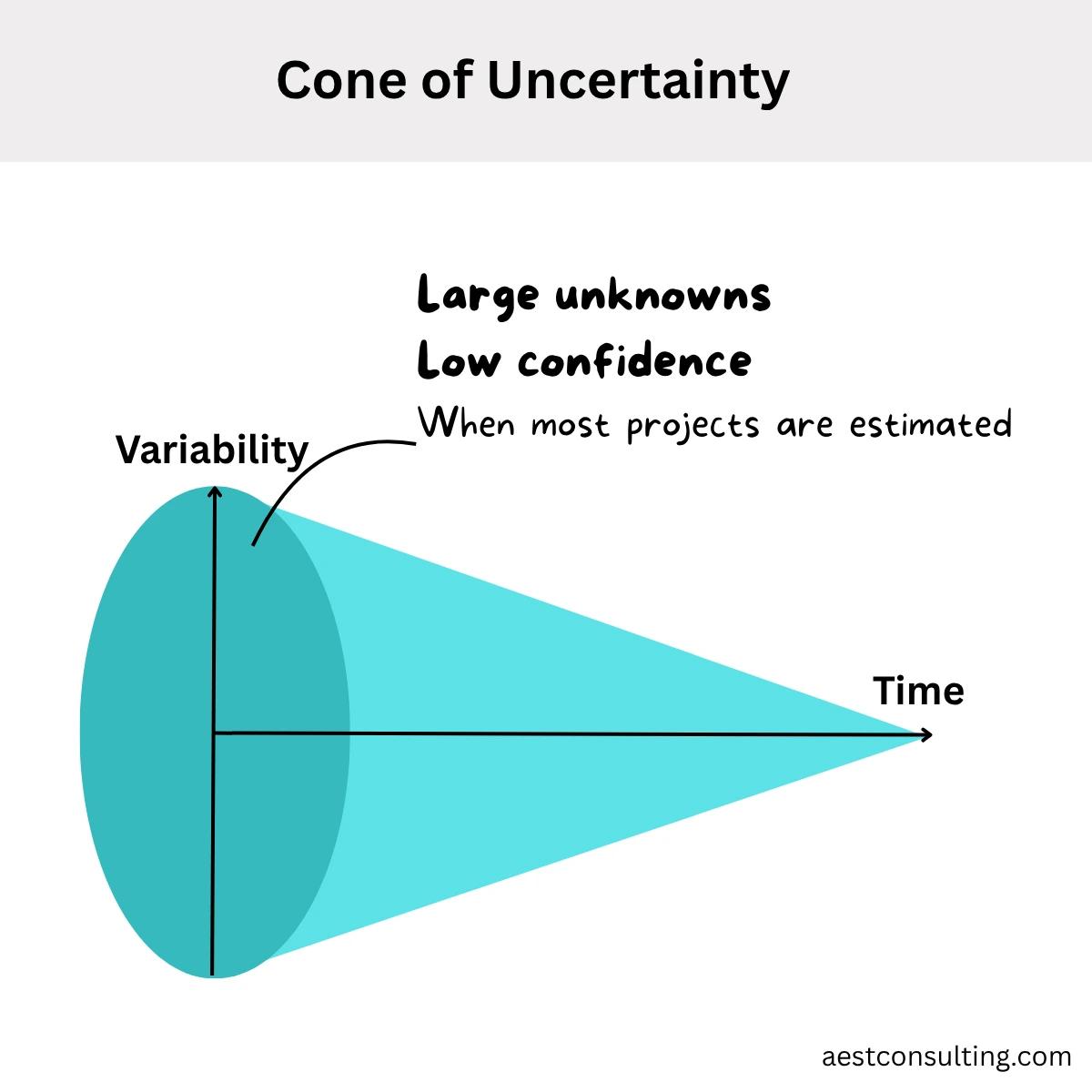De-risking Large IT Initiatives and Delivering Success
Author:

Fast-moving markets don't go well with large initial plans. They severely limit the ability to deliver what matters efficiently, on time, and under budget.
This shows itself in different shapes and forms.
- Blown-out Budgets: Rework, missed market opportunities, and the cost of building the wrong thing can quickly inflate expenses far beyond initial estimates.
- Broken Promises: Failing to meet customer expectations or market demands due to a rigid approach leads to damaged brand reputation and lost trust.
- Stifled Innovation: The focus on fixed scope and timelines leaves little room for experimentation, learning, and the continuous improvement that fuels product success.
Take large technology initiatives as an example, they involve thousands of interconnected systems. Add the changing market trends and evolving customer behaviour to that, initial plans fall flat pretty quick. It's a game of moving parts and moving targets that defy all upfront plans.
Estimating too far, too soon
Estimating everything right at the outset is a gamble. That's the peak of unknowns where teams know the least about what they'll face.

Therefore, reducing the time between plans and outcomes becomes the only way to hit those moving targets. Otherwise, targets move but focus lags, resulting in wasted time and effort spend on no longer important work.
In preparing for battle I have always found that plans are useless, but planning is indispensable. - Dwight D. Eisenhower
Delivering Quick Bursts of Value, Continuously
The deeper an organisation bogs down in upfront planning, the less efficiently and less likely it pivots. Therefore, planning and discovery should be ongoing and intertwined activities rather than distinct phases.
It is fairly common to see technology teams deliver incrementally, but on outdated requirements, underserving their customers despite all their efforts. That is a reminder for us to zoom out, and see the system as a whole, rather than optimising its parts in isolation.
At AEST Consulting, we identify strategic themes, map value-streams, define success metrics, and build high-performing teams that continuously take ideas and turn them into solutions their customers love.
